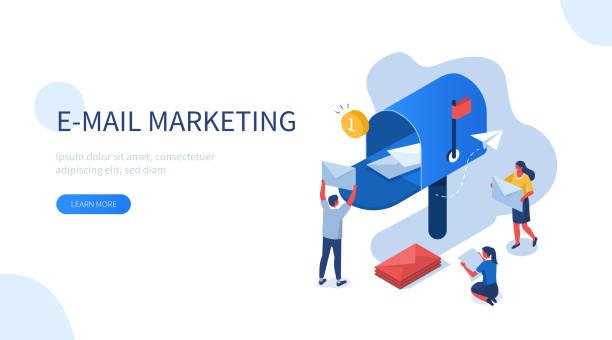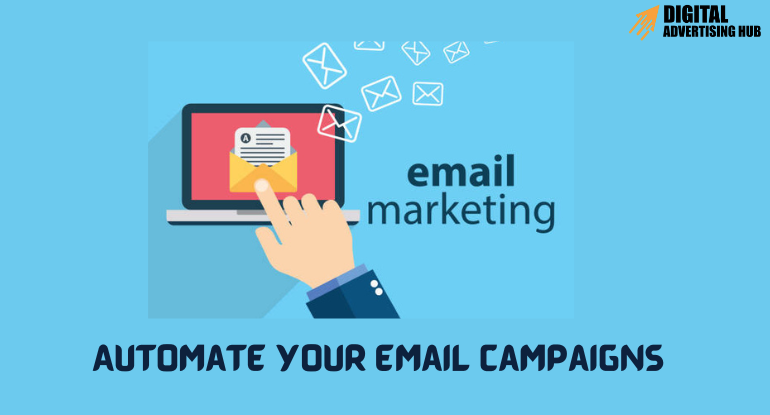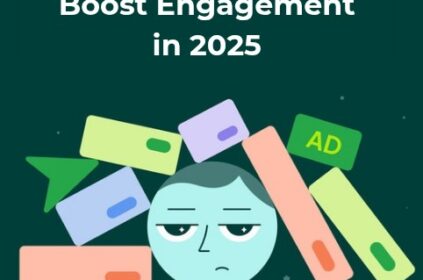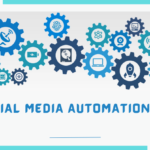Imagine you have just met a potential customer. You have exchanged a few words, and he seems interested, but you know that one meeting isn’t enough to close the deal. What do you do? You follow up. You stay in touch, continue the conversation, and build a relationship.
The digital version of this is called email marketing. This is your opportunity to continue the dialogue, develop the lead, and convert them into loyal customers. However, it involves more than just sending out mass emails to people. It is about establishing rapport, adding value, and demonstrating your concern.
In my previous posts, “Google Ads Strategy for Lead Generation: 6 Practical Tips to Get More Customers and Sell with Online Advertising” and “Google Ads Conversion: Discover How I Convert Leads to Paying Customers,” we explored the power of Google Ads in driving targeted traffic and converting leads into paying customers.
Email marketing is a powerful tool that can help you to nurture and convert leads. As a business owner or digital marketer, understanding how to effectively leverage email marketing can significantly impact your bottom line.
Let us explore strategies for segmenting your email list, automating campaigns, crafting compelling content, and measuring success in this post together. By the end, you will have a solid understanding of how to use email marketing to nurture leads and drive conversions. By the way, quickly learn about my 12 Proven Tips to Create Urgency and Scarcity in Email Marketing to Drive Sales and Traffic.
The Power of Email Marketing After Google Ads

You can use Google Advertising to provide targeted visitors to your website, but that’s only the start. When you can nurture those leads and turn them into paying clients, that’s when the real magic happens. Email marketing can help with this.
Following Google Ads email marketing is an essential part of your lead nurturing strategy for the following seven reasons:
#1. Customized Communication: With email marketing, you can communicate with your leads in a way that is highly tailored to their preferences, behavior, and areas of interest. This raises the likelihood of conversion and fosters better relationships.
#2. Nurturing Leads: After a prospect visits your website, email marketing gives you a way to stay in touch with them. You can nurture them along the sales funnel by responding to their inquiries, sending them insightful information, and offering special deals.
#3. Lead Segmentation: To provide more relevant and tailored information, you may divide your email list into groups according to a variety of factors (such as demographics, interests, and behavior). Engagement and conversion rates rise as a result.
#4. Automation: You can create automatic campaigns like welcome series, abandoned cart alerts, and post-purchase follow-ups with email marketing automation solutions. Time is saved, and regular communication is guaranteed.
#5. Measurable Outcomes: Email marketing provides extensive tracking and analytics, which let you gauge how successful your initiatives are. To improve your approach, you may monitor KPIs like open rates, click-through rates, and conversions.
#6. Cost-Effective: Email marketing is comparatively less expensive than other marketing platforms. With a small budget and a well-thought-out email campaign, you can obtain great results.
#7. Long-Term Relationships: Building long-term relationships with your consumers is a terrific use of email marketing. You may promote recurring business and client loyalty by continuously offering value and maintaining contact.
How to Use Email Marketing in Nurturing and Converting Leads
Step 1: Segment Your Email List
The act of breaking up your email list into more manageable, smaller groups according to predetermined criteria is known as segmentation. You may increase engagement and conversion rates by delivering more relevant and customized content by segmenting your list.
Main Advantages of Segmentation
#1. Enhanced Engagement: Subscribers are more likely to open, read, and click through emails that are customized to their individual interests and demands. Higher open rates, click-through rates, and general engagement metrics will result from this.
#2. Higher Conversion Rates: Since you’re reaching the right audience with a message that is suitable at the right time, targeted content has the potential to increase conversion rates. For instance, you may target subscribers who have previously shown interest in that product category or made comparable purchases if you’re providing a discount on a new one.
#3. Enhanced client Satisfaction: You can boost client satisfaction and forge closer bonds by offering tailored content. Increased client loyalty, repeat business, and favorable word-of-mouth can result from this.
Common Segmentation Criteria
1. Demographics: Position, age, gender, economic bracket, etc. One way to cater to the age of your audience is by creating age-specific product or promotion segments within your list.
2. Behavior: Past purchases, usage of the website, correspondence, etc. For example, you might send tailored reminders or give incentives to finish the transaction by segmenting your list depending on abandoned basket behavior.
3. Interests: inclinations, pastimes, profession, etc. To deliver pertinent material, like blog entries, product recommendations, or business news, you may divide up your list according to interests.
4. Lifecycle Stage: New subscribers, existing customers, inactive subscribers, etc. This segmentation allows you to tailor your emails to different stages of the customer journey. For example, you could send a welcome email to new subscribers, offer exclusive discounts to existing customers, and re-engage inactive subscribers with personalized offers.
Let’s consider a clothing retailer as an example. They could segment their email list based on:
1. Product-based segmentation: Divide the customers’ list into groups according to the goods and services they have either bought or shown interest in. They may, for example, designate categories for clients who have bought gowns, jeans, or accessories.
2. Geographic segmentation: Direct emails to certain regions or areas. They can then modify their messaging to suit regional tastes and cultural quirks.
3. Behavior-based segmentation: Divide your list into groups according on website activities like blog visits and abandoned carts. They might give exclusive material to subscribers who regularly read their blog, or they could send abandoned cart reminders to consumers who have left products in their basket without completing the transaction.
By effectively segmenting their email list, the clothing retailer can create more targeted and effective email campaigns that drive results. They can deliver personalized recommendations, offer relevant promotions, and provide a better overall customer experience.
How Can You Obtain Email Lists from Google Ads?
You must first compile a list of email addresses before you can begin implementing segmentation tactics. Here’s how Google Ads may provide email lists to you:
#1. Monitoring Conversions: Install conversion tracking on your website to monitor website visitors who click on your advertising and complete specified activities, such submitting a contact form or completing a purchase. You will be able to determine the email addresses of those who have converted as a result.
#2. Lead Generation Forms: Build forms for generating leads on your website and link them to your Google Ads campaigns. Users’ email addresses will be collected and added to your list when they complete these forms.
#3. Remarketing Lists: Make lists of website users who have performed particular actions, including seeing particular pages or adding products to their carts, in order to target them with ads. Ads may be targeted to those who have already expressed interest in your goods or services using these databases
#4. Google advertising Audience Lists: You can target your advertising using a variety of audience lists that Google Ads provides. These lists may be created using interests, demographics, or other factors. You can get email addresses from people who are perhaps interested in your goods or services by focusing on these lists.
You can start segmenting email addresses after you have a list of them. This will enable you to send out email campaigns that are more successful and focused.
Step 2: Automate Your Email Campaigns
One effective technology that can assist you to save time and increase the effectiveness of your email marketing is email automation. You may concentrate on more tactical elements of your campaign and provide your subscribers with a better-tailored experience by automating repetitive chores.

Typical Automated Email Marketing Campaigns
#1. Welcome Series: An email series designed to acquaint new subscribers with your business, offer insightful material, and motivate interaction.
#2. Reminder emails for abandoned carts: These are sent to clients who have added products to their cart but haven’t finished the transaction. These emails have the ability to both remind consumers of the products they left behind and entice them to finish the transaction.
#3. Emails send to customers to thank them for their order, offer customer service details, and promote repeat business following a transaction.
#4. Campaigns for re-engaging dormant subscribers: emails intended to get them back in touch with your company. These campaigns may include surveys to get feedback, personalized content, or special offers.
#5. Birthday Campaigns: Emails that are sent to customers on their birthdays wishing them a happy birthday along with a special offer of a gift or discount.
Benefits of Email Automation
#1. Time-saving: By doing away with the necessity for human labor, automation frees up your time so you can concentrate on other areas of your company.
#2. Enhanced Consistency: Automated campaigns guarantee that messages are sent at the appropriate time and with the appropriate content, giving your subscribers a consistent experience.
#3. Enhanced Engagement: You may enhance engagement and conversions by fostering stronger customer connections and nurturing leads through automated programs.
Tips for Effective Email Automation
1. Define Your Goals: Clearly define the goals of your automated campaigns and tailor your content and timing accordingly.
2. Personalize Your Messages: Use personalization tags to include the subscriber’s name, purchase history, or other relevant information in your emails.
3. Test and Optimize: Continuously test and optimize your automated campaigns to ensure they are performing effectively.
By effectively using email automation, you can streamline your email marketing efforts and achieve better results.
Some Email Automation Tools
To make sure that your campaigns are sent on time and with the proper content, and to streamline your email marketing efforts, email automation solutions are crucial. The following well-known email marketing services have strong automation features:
1. Mailchimp: A well-known all-in-one email marketing tool with many automation capabilities, such as A/B testing, welcome series, and abandoned cart alerts.
2. Constant Contact is an additional well-liked email marketing platform including an easy-to-use interface and an array of automation options.
3. ActiveCampaign: This email marketing platform is more sophisticated and provides sophisticated automation capabilities including marketing automation processes and conditional logic.
4. HubSpot: A feature-rich marketing automation platform that works with sales and CRM, among other HubSpot technologies.
5. SendinBlue: A cost-effective email marketing platform with a focus on simplicity and ease of use.
These tools can help you automate tasks such as sending welcome emails, abandoned cart reminders, and re-engagement campaigns, saving you time and improving the efficiency of your email marketing efforts. Discover the Top 12 Free Email Marketing Service Providers You Should Consider for Your Business.
Step 3: Adhere to Best Practices for Email Content
To engage subscribers and increase conversions, you must provide interesting email content. The following are recommended practices to bear in mind:
Subject Lines
#1. Keep it Short and Sweet: Try to limit the length of your subject line to no more than fifty characters. By doing this, you can be sure that your subject line will appear on the majority of email clients and not be cut off.
#2. Be Particular and Useful: Express your email’s value proposition in clear and concise terms. Try using a more targeted subject line, such as “20% Off New Fall Collection” or “Exclusive Access to Our Latest Webinar,” in place of something generic like “New Products.”
#3. Establish a Sense of Urgency: To promote quick action, use phrases like “urgent,” “limited time,” or “exclusive.” For instance, “Last Chance: 24 Hours Only” and “Exclusive Offer: Get 10% Off Your First Purchase.”
#4. A/B Test: Try out several topic lines to determine which ones work best. Make two or more versions of your email and test whether one has a greater open rate by sending it to a subset of your list.
Body Copy
#1. Keep It brief: Speak in simple, easy-to-read language that is clear and brief. Steer clear of utilizing technical or jargon terminology that your readers might not comprehend.
#2. Make Use of Strong Visuals: To break up your content and add visual appeal to your emails, use photographs, videos, or GIFs. Additionally, using visuals may improve the effectiveness of your message and draw in new subscribers.
#3. Provide a Clear Call to Action: Clearly state what you want your subscribers to do, be it click on a link, make a purchase, or subscribe to your newsletter. Write with confidence and urgency, such as “Buy Now,” “Learn More,” or “Sign Up.”
#4. Personalize Your Content: Use personalization tags to include the subscriber’s name, purchase history, or other relevant information in your emails. Personalized content can help to build stronger relationships with your subscribers and increase engagement.
Design
1. Mobile Optimization: Since many emails are viewed on smartphones and tablets, make sure your emails are mobile-friendly. To make sure that your emails appear fantastic on all screen sizes, use responsive design.
2. Consistent Branding: To establish a recognizable and polished appearance, use consistent branding components like colors, typefaces, and logos. This will foster confidence among your subscribers by assisting them in connecting your emails with your brand.
3. White Space: To make your emails simpler to read and more aesthetically pleasing, use a lot of white space. Emails that include too much material on a single page tend to be harder to read and less interesting.
By following these best practices, you can create email content that is engaging, persuasive, and effective in driving conversions.
Step 4: Measure Your Email Performance

It’s important to monitor important data and evaluate your outcomes in order to determine the success of your email marketing campaigns. Here are a few crucial metrics to think about:
1. Open Rate: The proportion of subscribers that read your email is known as the open rate.
A high open rate suggests that the topics you’ve chosen are interesting and pertinent to your readers. A low open rate might indicate that your emails are being marked as spam or that your subject lines aren’t interesting enough. Learn more about the Email Marketing Open Rate: 5 Best Practices to Improve It
2. Click-Through Rate (CTR): This is the proportion of subscribers that open an email link. A high CTR suggests that your content is engaging and relevant to your subscribers. If your CTR is low, it may indicate that your content is not interesting or that your call to action is not clear or compelling.
3. Conversion Rate: This is the proportion of subscribers who complete a desired activity, such as buying something or subscribing to a newsletter.
The best indicator of the effectiveness of your email marketing is the conversion rate. When your email conversion rate is high, it indicates that you are successfully promoting conversions and making sales.
4. Bounce Rate: The proportion of undeliverable emails is this figure. A high bounce rate may be a sign that some of the addresses in your email list are out-of-date or incorrect. Your reputation and deliverability may suffer as a result.
5. Unsubscribe Rate: This refers to the percentage of subscribers who opt out of your email list. A high unsubscribe rate can indicate that your content is not relevant or engaging to your audience. It’s important to monitor your unsubscribe rate and take steps to improve your content if it’s too high.
Tools for Measuring Email Performance
#1. Email Marketing Platforms: Most email marketing platforms provide built-in analytics tools to track key metrics and generate reports. These tools can help you easily monitor your email performance and identify trends.
#2. Google Analytics: You can integrate Google Analytics with your email marketing platform to track website traffic and conversions driven by your emails. This can give you a more comprehensive view of your email marketing performance.
Analyzing and Optimizing Your Results
1. Regularly Review Metrics: Track your key metrics over time to identify trends and areas for improvement. Compare your current performance to previous periods to see if you’re making progress.
2. Compare to Benchmarks: Compare your metrics to industry benchmarks to see how your performance stacks up. This can help you identify areas where you need to improve.
3. A/B Test: Experiment with different email elements, such as subject lines, content, or design, to see what works best for your audience. A/B testing can help you optimize your emails and improve your results.
4. Make Data-Driven Decisions: Use your data to make informed decisions about your email marketing strategy. For example, if you notice a low open rate, you can experiment with different subject lines to improve engagement.
By tracking and analyzing your email performance, you can identify areas for improvement and optimize your campaigns to achieve better results.
Step 5: Overcome Common Email Marketing Challenges
Although email marketing is a useful tool, there are several drawbacks. Here are some typical roadblocks you could run across and some advice on how to get past them:
#1. Filters for spam: Emails from you can be regarded as spam and never make it to the inboxes of your subscribers. This may have a detrimental effect on your email marketing campaigns and result in lost chances.
Ways to Get Past It
1. Keep your email list tidy: Steer clear of buying or renting email addresses since these lists frequently contain spam traps or incorrect addresses. Rather, concentrate on using opt-in techniques to grow your list naturally.
2. Make use of a trustworthy email marketing platform: Pick one that has a solid delivery record. These platforms frequently come with built-in tools that assist you in evading spam filters.
3. Steer clear of spammy terms and phrases: Avoid clear terms and phrases that are frequently linked to spam, including “make money fast” or “urgent.”
4. Authenticate your emails: To increase deliverability and validate your emails, use SPF, DKIM, and DMARC. By using these authentication techniques, you can confirm that the emails you are sending are valid.
#2. Low Engagement Rates: Your subscribers are not opening or clicking on your emails. This can lead to a decrease in conversions and revenue.
How Do Your Overcome It?
1. Improve your subject lines: Create compelling subject lines that are relevant to your subscribers and encourage them to open your emails.
2. Segment your email list: Deliver more targeted content to specific segments of your audience. This can help to improve engagement and relevance.
3. Optimize your email design: Ensure your emails are visually appealing, easy to read, and mobile-friendly.
4. Experiment with different send times: Find the best time to send your emails based on your subscribers’ time zones and behavior.
5. Provide valuable content: Offer content that is informative, helpful, and relevant to your subscribers’ interests.
#3. Deliverability Issues: Your emails are not reaching your subscribers’ inboxes. This can be due to a variety of factors, such as spam filters, technical issues, or poor email list hygiene.
How to Overcome It
1. Monitor your bounce rate: Keep an eye on your bounce rate and remove invalid email addresses from your list. A high bounce rate can damage your sender reputation.
2. Use a reputable email marketing platform: Choose a platform with good deliverability practices and a strong sender reputation.
3. Authenticate your emails: Use SPF, DKIM, and DMARC to authenticate your emails and improve your deliverability.
4. Avoid sending too many emails at once: Sending too many emails too frequently can be flagged as spam.
#4. Lack of Resources: You don’t have the time or resources to manage your email marketing efforts.
How to Overcome It
1. Outsource your email marketing: Consider hiring a professional agency or freelancer to manage your email marketing campaigns.
2. Use an email marketing platform with automation features: Many email marketing platforms offer automation features that can help you save time and streamline your workflow.
3. Prioritize your email marketing efforts: Focus on your most important campaigns and delegate or eliminate less critical tasks.
#5. Competing Priorities: Email marketing may not be a top priority for your business, especially if you have other pressing demands.
How Do You Overcome It?
1. Demonstrate the ROI of email marketing: Show your team or boss how email marketing can contribute to your business goals and generate revenue.
2. Set realistic goals: Establish achievable goals for your email marketing campaigns and track your progress.
3. Allocate sufficient resources: Ensure that you have the time, budget, and personnel to effectively manage your email marketing efforts.
By addressing these common challenges, you can improve the effectiveness of your email marketing campaigns and achieve better results.
Conclusion
Email marketing is a powerful tool that can help you nurture leads, build relationships, and drive conversions. By following the strategies outlined in this guide, you can create effective email campaigns that deliver results.
Remember to focus on creating valuable content, personalizing your messages, and continuously measuring and optimizing your performance. With consistent effort and dedication, you can achieve your email marketing goals and drive growth for your business.










